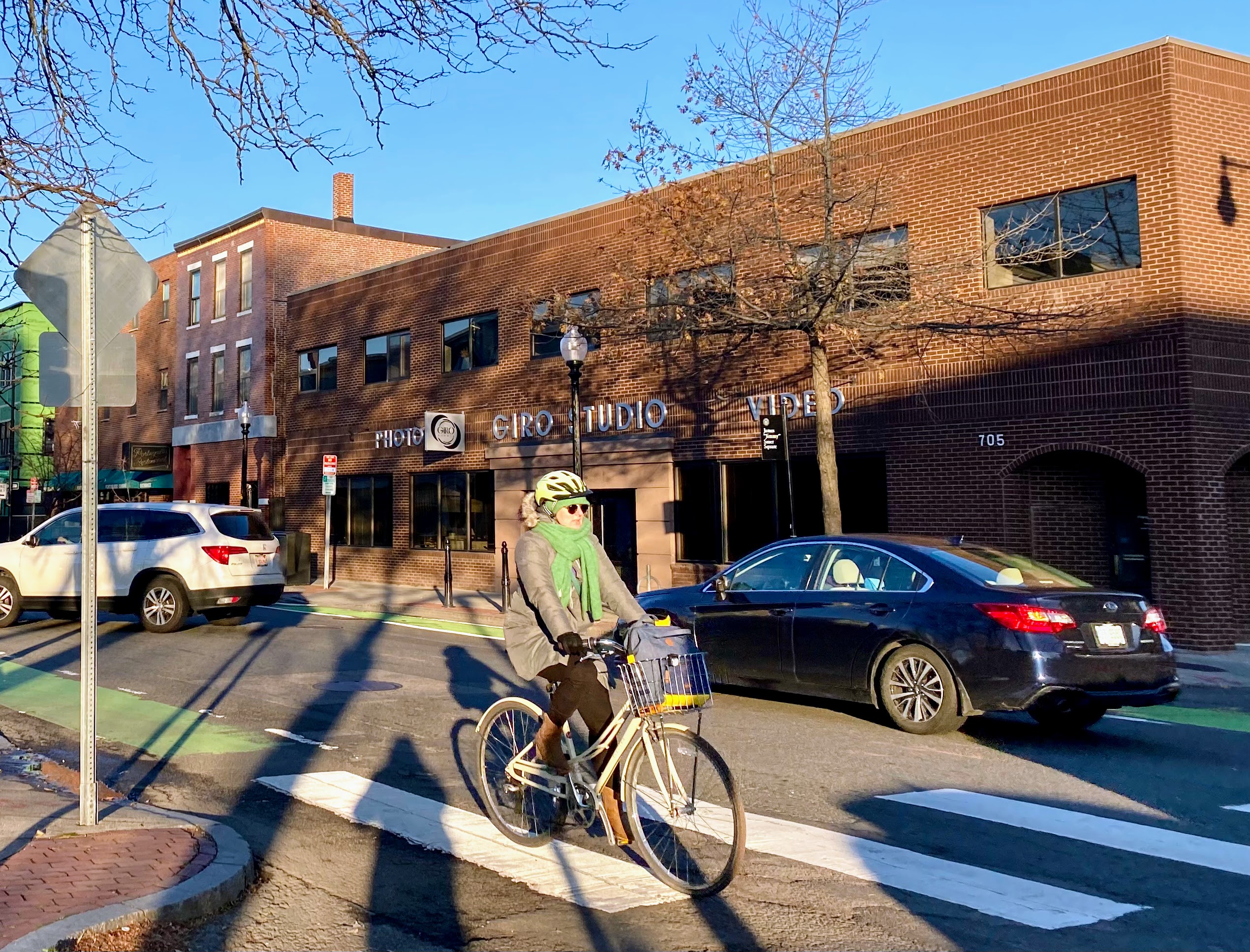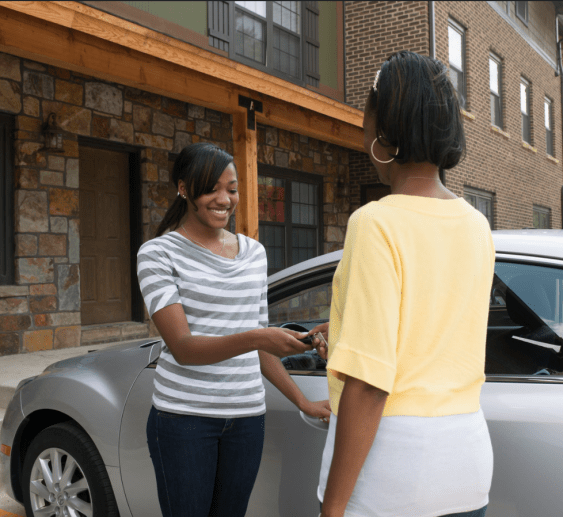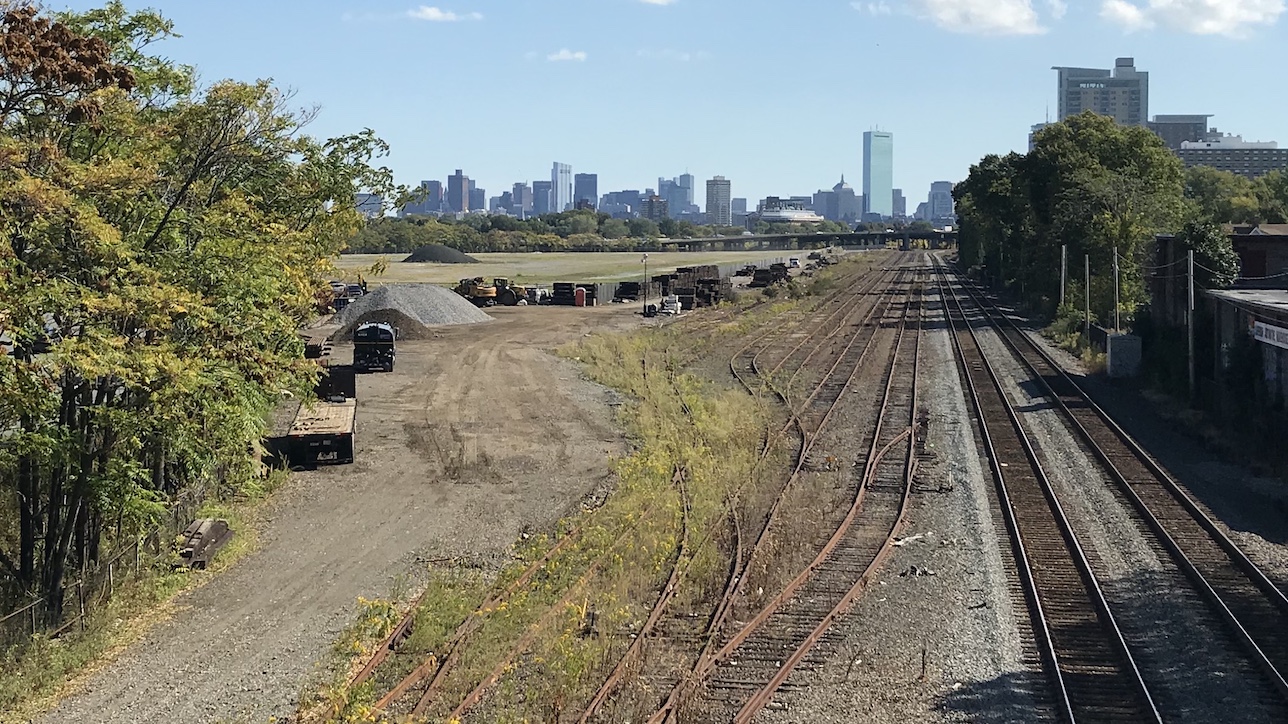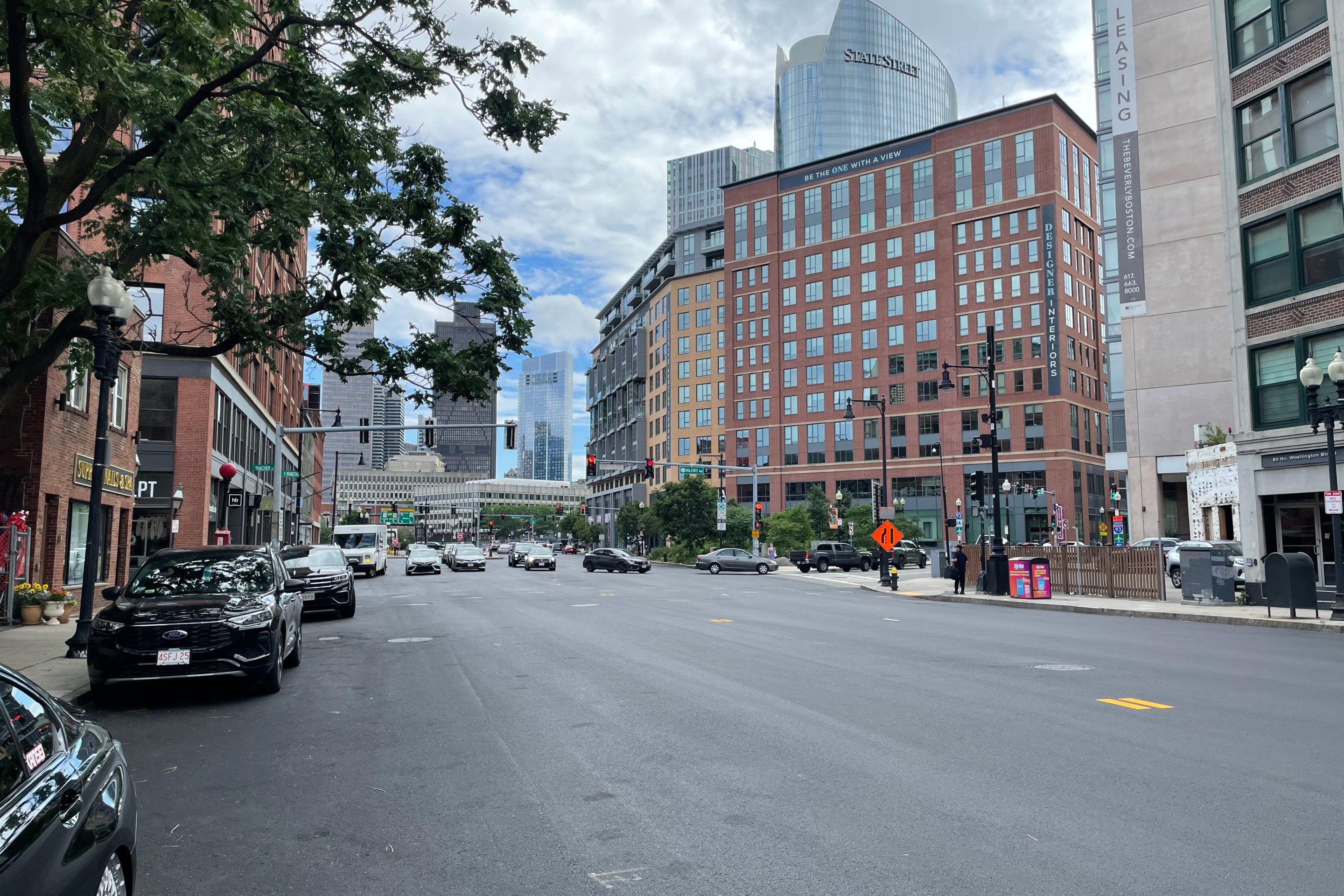
Editor's note: this story was originally published in December 2022
Now that winter’s cold and darkness are closing in on us, some are getting ready to try biking through a New England winter for the first time, and exploring the possibility of becoming year-round bicyclists.
Last Thursday evening, MassBike, a transportation advocacy nonprofit, together with the Seaport Transportation Management Association (TMA), a private non-profit with a mission to ease traffic congestion and advance transportation options, teamed up to host a Winter Cycling clinic in the Seaport neighborhood for folks wanting to learn how to safely and comfortably bike through the cold months ahead.
Ian Kolesinskas, an East Boston resident new to biking in the winter, says working from home during the winter months can leave him feeling cooped up.
“Being able to get outside and at least do a commute to the office would be really nice – a good way to spend a winter day,” he said.
Galen Mook, MassBike Executive Director and longtime Boston bike advocate, led the presentation, sharing tips on how to take care of one’s bike after riding on salted streets and how to overcome the cold, dark and wet conditions of winter biking.
“Let’s talk about bikes!” Mook started, walking over to his winter bike on display, a steel-frame single gear bike equipped with a basket for carrying his bag, several reflectors to make himself visible to cars, and a rear rack for additional carrying capacity.
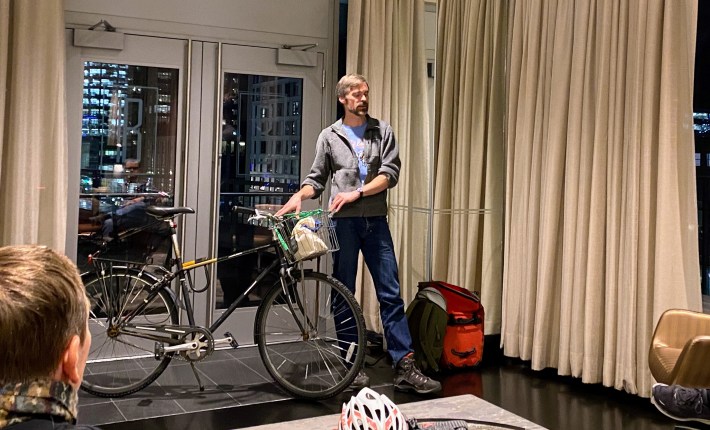
The bike
If you’re worried about the wear and tear your bike will withstand in the winter, Mook suggests purchasing a cheaper bike through Craigslist or a shop like Bikes Not Bombs.
“Buy a bike for $70 bucks, that you know might need a little bit of work, put a little bit of work into it, and then you’re not worried about it coming apart.”
Tire accessories
There are winter-specific bike tires with studs in them and deeper treads that increase their grip in the snow or in icy conditions.
Another way to increase grip is to bring the air pressure to the lowest recommended range (as marked on the tire) making the tires softer and squishier, adding friction, and helping with traction.
Adding fenders to your bike can block any slush kicked up by your tires and help keep you (and the rest of your bike) dry. Otherwise, Mook recommends getting some good rain gear or some good outer layers.
Seat and balance
Lowering the seat can help with balance in case you feel yourself starting to slip while riding in snow or an icy patch. Being lower can make it easier to get your foot down and catch yourself.
Brakes
Mook advises checking and testing your breaks often, as debris can get between the pads and the rim.
Cleaning your bike
Mook recommends using a watering can with warm water (not a hose because that can actually force debris into the frame and into the components) and just pouring the water over the bike and wiping it down to get any sand and salt off that has accumulated during your ride. After the bike dries you can add lubricant to the chain to prolong its life. Don’t forget to wipe off any excess lubricant.
Lights
MassBike runs a volunteer program, Lights Brigade, where folks get paired with other volunteers to distribute lights to cyclists. “You can never have too many lights,” says Mook.
Front basket and rear rack
In the winter time, Mook says having the ability to carry things is very important, especially when wanting to bring along a change of clothes.
“Say you want to ride home from work, it's going to be a really nasty day, wear your waterproofs, put your clothes in your bag, and then you’re set,” said Mook.
When it comes to getting gear, “bike shops are your friend,” said Mook. He warned that Amazon sells a lot of low-quality gear that can break, “whereas if you buy something from a bike shop, it’s got a guarantee with it.”
David Salvia, a Cambridge resident who has lived in the area for over 20 years, has some experience riding in the winter, but is ready to take it to the next level after mounting frustrations with the T.
“About six weeks ago I got completely frustrated with the MBTA. I was taking the Red Line to the Silver Line and the waits were getting longer, the platforms were getting more crowded, the Silver Line was getting more crowded. It was taking me an hour to get to work,” he explained.
Then this October, he purchased an e-bike.
“I've been commuting to work ever since then with it and I thought, ‘for as long as I’m doing this I’m going to try to see if I can continue to do it into the winter’,” said Salvia.
Previously, Salvia would hop on a Bluebike and ride from his home to Central Square. He did this for about a year through snow and rain.
“It was only one mile on a straight street that was plowed. But..that gave me the confidence to think maybe I could do it on a longer commute. So we’ll see how it goes,” he said as he gathered his things after the clinic, now equipped with more tips for his new adventure.

Gary Chin, Director of Community Engagement at Bikes Not Bombs, has been biking since he was four years old, but until a few years ago he mostly rode during the nice weather months.
Inspired by his brother who commutes to work year round in New York City, where Chin’s family is from, Chin got himself a steel-framed gravel bike in early 2018 to begin his wintertime rides.
“It's really the best part of my day because I get to ride to and from work and if I had a tough day at work, I forget about it by the time I'm home,” he shared.
No longer waiting until the weekend to ride his bike, Chin now pedals 9,000 miles a year, largely commuting from his home in Malden to his job in Jamaica Plain, a 24-mile round trip.
“I don't want to stop riding just because it gets cold,” he said.
Depending on how low the temperatures get, Chin changes up his layering to keep his core and extremities warm.
He says pogies, or bar mitts, as they’re also known, are one of his favorite accessories for days in the 20’s and below since they can be paired with glove liners, keeping his hands warm.
“When it drops below freezing what really matters is insulation and wind protection,” he says.
For anyone considering giving winter biking a try, Chin recommends “taking it slow, staying close to home and really experimenting to see what works… if you’re close to home then you can always go back.”
If this is the year you’d like to try winter biking, but maybe your bike could use a little attention, the City of Boston is hosting two free hands-on bike repair workshops in the coming days:
- Wednesday, December 7th, 4 p.m. - 5:30 p.m. at East Boston Library
- Tuesday, December 13th, 4:30 p.m. - 6 p.m. at Egleston Library
